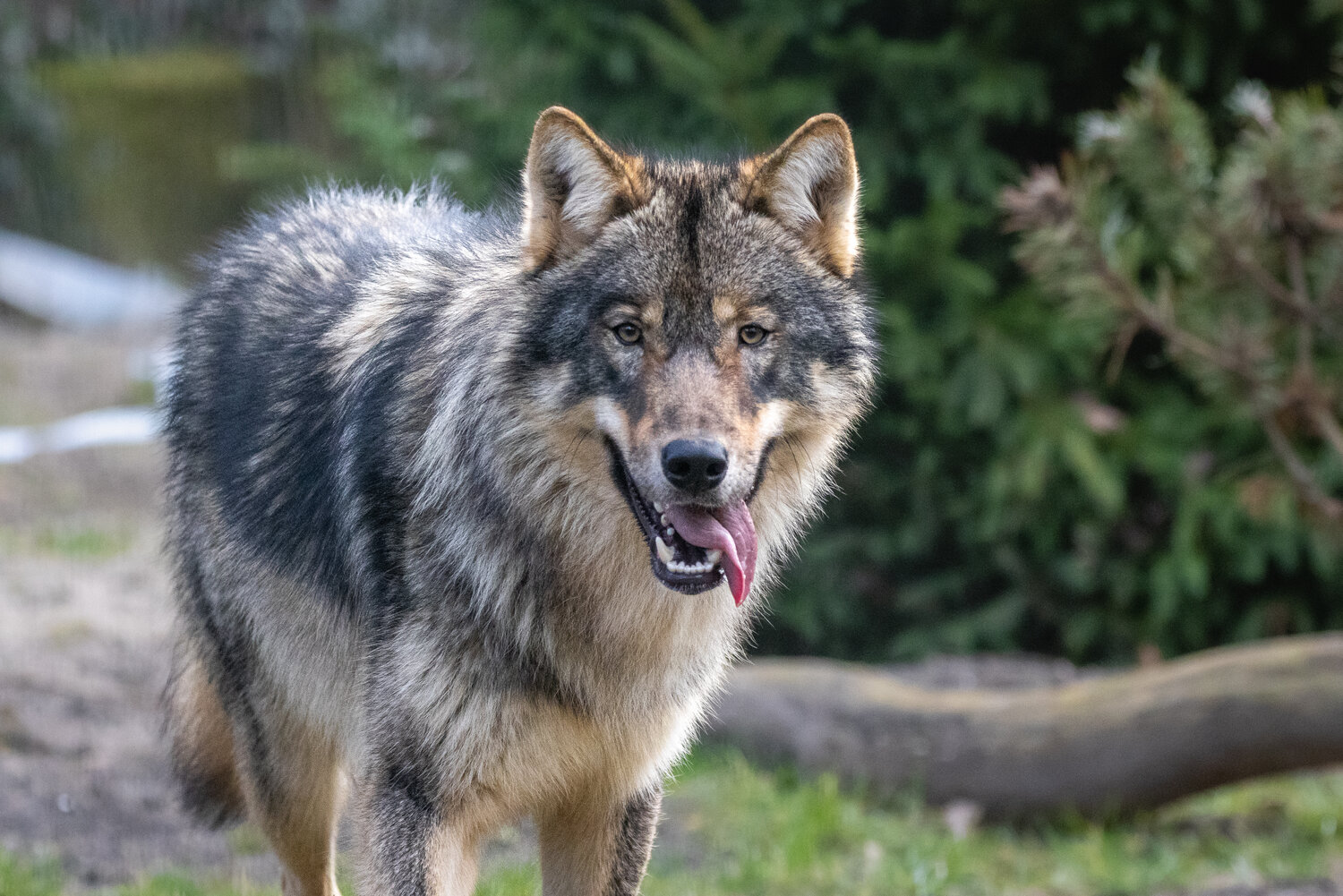Wolves have officially made a comeback – not only in Germany, but also at Zoo Berlin. On 12 March, a pack of five Eurasian wolves from Riga moved into their new habitat in the immediate vicinity of the children’s playground and the Waldschänke bar and restaurant. The habitat took around six months to complete and offers the five wolves a naturally structured territory with dense overgrowth and plenty of places to retreat. The canines are currently still exploring and settling into their new home out of the public eye. They will be on view to Zoo visitors from the beginning of the Easter school holidays.
The Eurasian wolf was declared extinct in Germany in 1904. After Reunification in 1990, wolves were granted protected status throughout the country in an effort to help them recover. Since then, killing wolves has been illegal. But the wolf’s reputation as a dangerous predator still precedes it, which is why zoos and other conservation organisations are conducting educational work in an effort to counteract the myths and legends surrounding the “man-eating beast” with actual facts. “The wolf is an important part of the ecosystem, as it regulates herbivore populations, increases biodiversity, and preserves the ecological balance in its territory over the long term,” explains curator Dr Florian Sicks. “We want to promote an understanding for the animals that occupied these habitats and territories long before us – and that were pushed out of them by us.” To this end, an educational exhibition will be created over the coming months in the area around the redesigned wolf and brown bear habitats that will focus on the conflicts between humans and their wild neighbours. “The return of the wolves is a success story that gives us reason to be hopeful,” says Zoo and Tierpark Director Dr Andreas Knieriem. He explains that the Zoo wants to use the example of Eurasian wolves and brown bears to show how the coexistence of humans and wild animals even presents challenges right here in Berlin. “But respectful coexistence can be achieved if the local population is willing to accept and enable the return of these once extinct animals,” he adds. “This is just as true for bison in Azerbaijan as it is for wolves in Germany.”
The brown bears are expected to move into Zoo Berlin this summer.
Background: Wolves in Germany
Once upon a time, the wolf was the most widespread mammal in the world, alongside humans. Wolves were also a common sight in German forests. When people began keeping livestock many thousands of years ago, conflict between humans and wolves intensified. At the same time, the human population continued to grow. Wolves were native to Germany until the mid-19th century – when they were finally eradicated by humans. The last wolf in Germany was shot and killed in 1904. From then on, the species was considered extinct in the country. The decision to protect wolves was a critical moment in the fate of the elusive animals. Around the turn of the millennium, the European species gradually began reclaiming its former territory. Since 2007, wolves have been living once again in the forests of Brandenburg. Occasionally, wolves have even been glimpsed in Berlin.
The return of the wolves in figures
Around 1850: Wolves disappear from Brandenburg
1904: The last wolf in Germany is shot, marking the species’ extinction in this country
1990: Wolves are declared a protected species in Germany
2000: First sighting of wolf pups born in the wild in Germany
2007: Wolves return to Brandenburg
2022: A total of 225 wolves are recorded as living in Germany – 161 packs, 43 breeding pairs and 21 lone wolves
